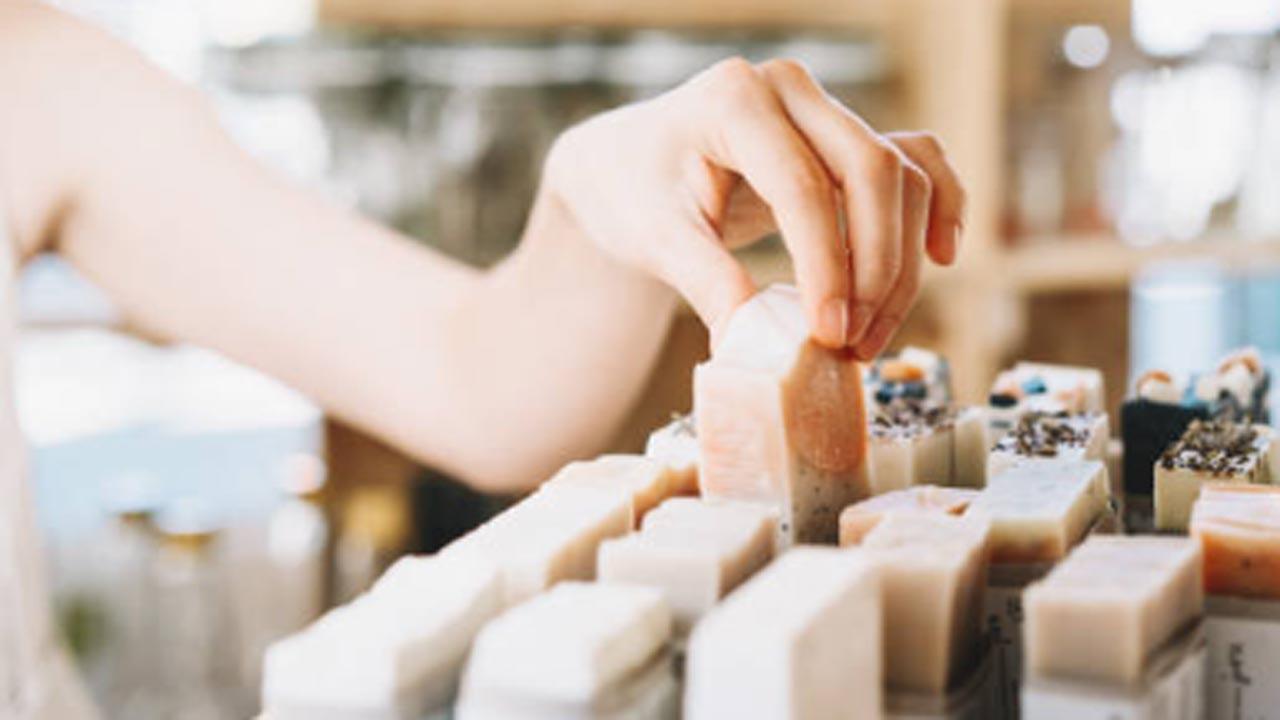This research lays the groundwork for a new way to reduce waste by channelling used plastics into the production of other useful materials

Image for representational purpose only. Photo Courtesy: istock
A group of scientists has created a brand-new process for turning plastic waste into high-value chemicals called surfactants, which are used to make soap, detergent, and other products.
ADVERTISEMENT
When it comes to texture, appearance, and most importantly how they are used, plastics and soaps typically don't have much in common.
However, there is an unexpected molecular link between the two, Fatty acid, which is used as a chemical precursor to soap, and polyethylene, one of the most widely used plastics in use today, have remarkably similar chemical structures. Long carbon chains underlie both substances, but fatty acids have an additional group of atoms at the end of the chain.
This similarity, according to Guoliang "Greg" Liu, an associate professor of chemistry at the Virginia Tech College of Science, implied that it should be possible to convert polyethylene into fatty acids and then produce a soap with a few extra steps. A long polyethylene chain needed to be efficiently broken up into numerous short chains that weren't too short. Liu thought there might be a new upcycling technique that could take low-value plastic waste and transform it into a valuable, practical good.
After pondering the issue for a while, Liu was suddenly inspired as he was spending a winter's night by a fireplace.
He observed the smoke emanating from the fire and considered how the smoke was composed of minute particles created during the combustion of the wood. Liu started to wonder what would happen if polyethylene could be burned in a secure laboratory setting, despite the fact that plastics should never be burned in a fireplace for environmental and safety reasons.
Firewood is mostly made of polymers such as cellulose. The combustion of firewood breaks these polymers into short chains, and then into small gaseous molecules before full oxidation to carbon dioxide," said Liu, holder of the Blackwood Junior Faculty Fellowship of Life Sciences in the Department of Chemistry. If we similarly break down the synthetic polyethylene molecules but stop the process before they break all the way down to small gaseous molecules, then we should obtain short-chain, polyethylene-like molecules."
Some of these experts were introduced to the team through connections with the Macromolecules Innovation Institute at Virginia Tech. Together, the group documented and refined the upcycling process until it was ready to be shared with the scientific community. The work was published today in Science.
Our research demonstrates a new route for plastic upcycling without using novel catalysts or complex procedures. In this work, we have shown the potential of a tandem strategy for plastic recycling," said Xu, lead author of the paper. This will enlighten people to develop more creative designs of upcycling procedures in the future."
Although polyethylene was the plastic that served as the project's inspiration, polypropylene can also be upcycled using the same technique. Consumers frequently come into contact with these two types of plastic in the form of product packaging, food containers, and textiles. One of the appealing aspects of Liu's new upcycling technique is that it can be applied to both of these plastics simultaneously, negating the need to separate them. This is a significant improvement over some recycling processes currently in use, which call for careful sorting of plastics to prevent contamination. The two plastics are so similar to one another that sorting them can be quite challenging.
The very basic prerequisites of plastic and heat for the upcycling technique are another advantage. The initial transformation of the plastic is a simple reaction, even though the later stages of the process call for some additional ingredients to transform the wax molecules into fatty acids and soap. It also helps explain why the method has a relatively low impact on the environment and is cost-effective.
In order for upcycling to be successful on a large scale, the finished product must be worth enough to cover the costs of the upcycling process and make it more economically advantageous than other recycling options.
This research lays the groundwork for a new way to reduce waste by channelling used plastics into the production of other useful materials, Liu said. Over time, he hopes recycling facilities around the world will begin to implement this technique. If so, then consumers can expect to one day have the opportunity to buy revolutionary sustainable soap products that also lead to reduced plastic waste in landfills.
For this reason, turning plastics into soaps can be demonstrated to be economically viable, added Liu, who is also an affiliated faculty member of the nanoscience program, part of the College of Science s Academy of Integrated Science as well as the Department of Materials Science and Engineering in the Virginia Tech College of Engineering.
It should be realised that plastic pollution is a global challenge rather than a problem of a few mainstream countries. Compared to a sophisticated process and complex catalyst or reagent, a simple process may be more accessible to many other countries worldwide," Xu said. "I hope this can be a good start for the warfighting plastic pollution."
This story has been sourced from a third party syndicated feed, agencies. Mid-day accepts no responsibility or liability for its dependability, trustworthiness, reliability and data of the text. Mid-day management/mid-day.com reserves the sole right to alter, delete or remove (without notice) the content in its absolute discretion for any reason whatsoever
 Subscribe today by clicking the link and stay updated with the latest news!" Click here!
Subscribe today by clicking the link and stay updated with the latest news!" Click here!












